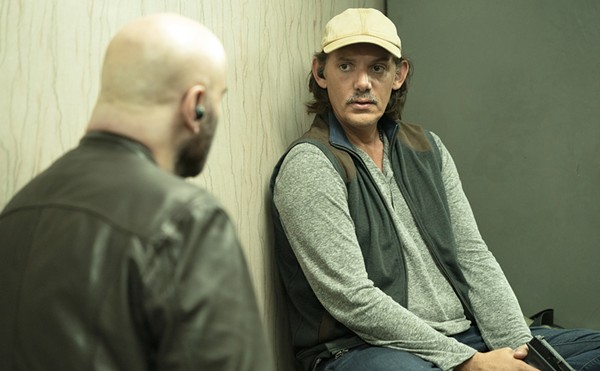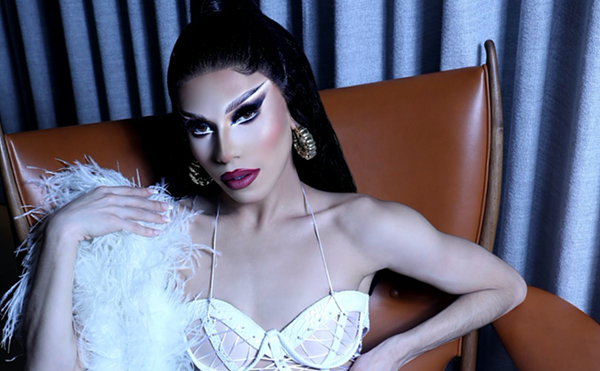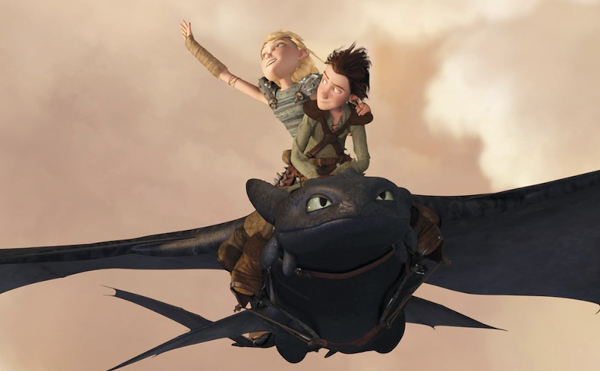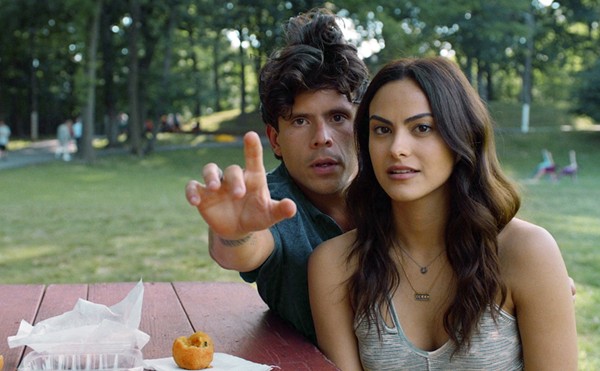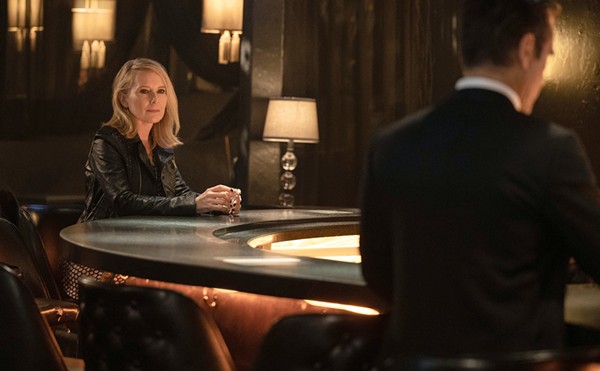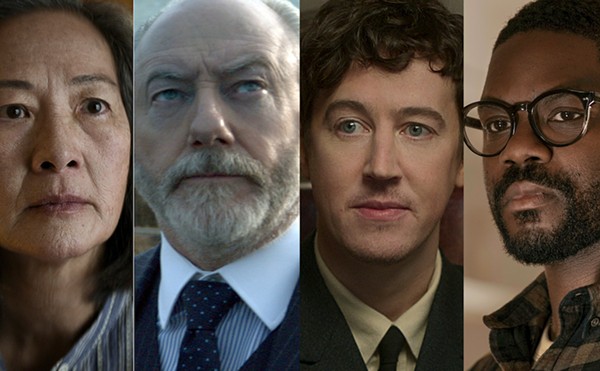There are worse things than the sickening surety of death, the knowledge that every moment of our existence will be shortly rendered insignificant by the unstoppable passage of time. That’s what the vampires would have us believe, anyway. But we mortals have never bought it.
Twilight’s Edward Cullen (played by pointy-teeth dreamboat Robert Pattinson) is the perfect example of the tortured, moody bloodsucker. He refuses to “turn” his girlfriend, Bella Swan (Kristen Stewart), despite her repeated pleas, because he doesn’t want to inflict the horrors of his freakishness on her. But for all his protests of undying pain, Cullen makes an extremely unconvincing case. Not only can he boast immortality, super strength and telepathy, as a revisionist vampire who only drinks animal blood, he has to sweat very few of the standard superstitions. He can check out his reflection in a mirror, decorate with crucifixes, and stand in direct sunlight, his only fear that he’ll shimmer with fabulousness.
All those Masquerade roleplayers and Buffy fan-fiction writers would chomp their mothers’ jugulars to be transformed into this gothed-out Superman, and so would any of us. Practically since the invention of the movie camera, we’ve been filming pale actors in fake fangs, so the current vampire glut in pop culture (Twilight, True Blood, Let the Right One In) isn’t really anything new. We’ve clearly got an obsession here. But the similarities in the films are striking enough to lead to one of two assumptions: a) the current cultural climate dictates a need for an extremely specific type of vampire tale, or b) being that economics, rather than originality, drive the entertainment industry, in an attempt to cash in on a perceived vampire trend sparked by the bestselling Twilight book series (and now hit movie), cowardly, soulless studio executives have been hastily fast-tracking similar projects. Since that second option is so awfully depressing, let’s focus on the first, and ask ourselves why, at this particular point in human history, we require two different movies and a television show (all based on books) about humans who fall in love with vampires. What is it that makes drinking blood (and/or abstaining from garlic) so damn sexy right now?
The basic premise of all three of these works is essentially the same: Girl/boy meets vampire and becomes intrigued and excited instead of sharpening a stake; other humans fear and hunt the vampire (and often for a good reason). All three films are set in contemporary time instead of the traditional Gothic era. True Blood and Twilight feature reformed vampires — ex-soldiers who became vampires during a long ago war — who risk alienation from their species in order to live in peace with the humans they no longer feed on. Both Cullen and True Blood’s Vampire Bill seem to be written as pouty, mysterious, fantasy boyfriends for dissatisfied girls and women just aching to ease their manly sadness of perpetual existence.
Swedish import Let the Right One In is more original for its adherence to many of the traditional mythos and for Eli (Lina Leandersson), its vicious and unrepentant blood-guzzling love interest, but next year’s Hollywood remake will likely rewrite it as the sort of conventional neck-nibbler we Americans demand. Eli, the sexually ambiguous vampire who lives next door to Oskar (Kåre Hedebrant), is less a dream date than a nightmarish manifestation of tormented Oskar’s alienation, impotent rage, and pubescent gender confusion.
All three vampires need protection from ignorant humans, but more often the ignorant humans need protection from the other vampires. In the cases of True Blood and Twilight (in which the lead vampires act as traditional romantic heroes), the blood-drinker’s task becomes defending the one human sympathetic to him from the other vampires, a group so one-dimensionally savage and bloodthirsty they make all that human fear and hatred look pretty justified. The anti-vampire sentiment (along with everything else) is drastically toned down in Twilight, reduced mostly to some icy, knowing stares from the neighborhood Native American tribe. The humans-first bigotry seems even more justified when the other vampires start biting innocent necks. In light of our “keep only the ones we’re currently exploiting” approach to illegal immigration, and the large-scale “one of the good ones” disconnect that allows Americans to eat lunch with a gay coworker then vote against his right to marry and adopt children, the implications of this vampire typecasting are worth reconsidering.
True Blood, basically a series of translucently veiled social allegories, lends itself to social-issues discussions, the show’s soap-opera and softcore porno elements be damned. The premise — the emergence of actual not-living vampires in smalltown Louisiana — is mostly an opportunity to analyze good ol’ Southern-fried fear of the other. Homophobia and racism are none too subtly satirized in the characterizations of the prejudiced townsfolk (a church billboard pictured in the show’s introduction, for example, reads “God hates fangs”), but interestingly enough, blatant forms of actual ignorance still very much exist, and people remain fractured by artificial distinctions, even in the face of a superior life form situated directly above man on the food chain. “We’re white,” affirms one of the show’s minor characters, explaining the difference between vampires and humans to her daughter. “He’s dead.”
And because Vampire Bill is so thoroughly deceased — “fangbanging” familiar Sookie (Anna Paquin) nearly breaks up with him because he doesn’t breathe — he becomes a convenient (and rather obvious) stand-in for the dreaded void, as his necrophilic relationship with Sookie subs for our awkward, lifelong courtship of death. The death instinct drivng the addiction, xenophobia, and even sexuality of the characters — Sookie and and a very dirty Bill actually make it on top of the grave he’s freshly dug out of — is as laughably visible as our own.
Twilight’s Bella doesn’t seem to be courting death with Edward, so much as she is looking for a prom date with perfect facial bone structure. To attempt to apply any of the commentary above to this film is to completely miss the point. Making too much of mankind’s hatred of the unknown would lead to an undesirable amount of outer conflict in what’s almost entirely a relationship story, one which might lead to Edward’s chivalrous rescue of Bella from thirsty vamp baddies, but that doesn’t actually climax until he picks her up for the big dance. Both Twilight and True Blood feature mind-reading characters drawn to the one person whose thoughts they can’t read, but it’s telling that while Sookie’s abilities provide a voyeuristic peek into the quiet depravity of normal-seeming people, Edward’s inability to hear Bella’s brainwaves mostly seems to function as an excuse for him to constantly ask about her feelings. As a cultural indicator, Twilight primarily proves what the popularity of Hannah Montana and High School Musical previously hinted at — the entertainment industry is controlled by tweenage girls. Maybe there really are fates worse than death. •




